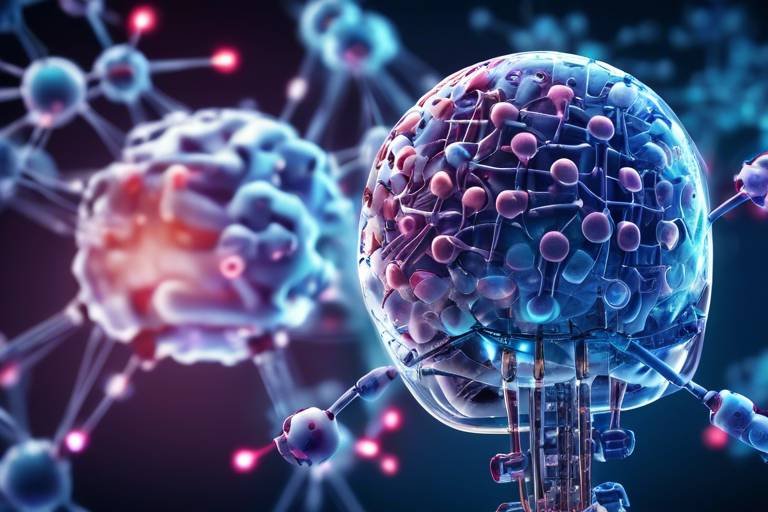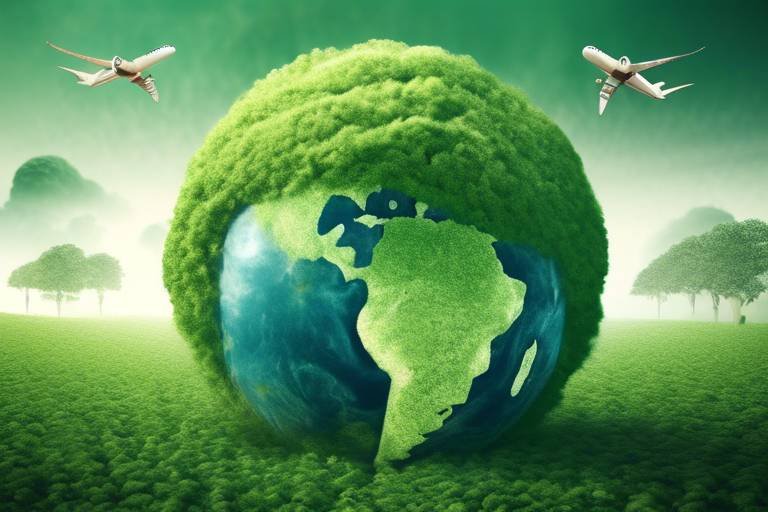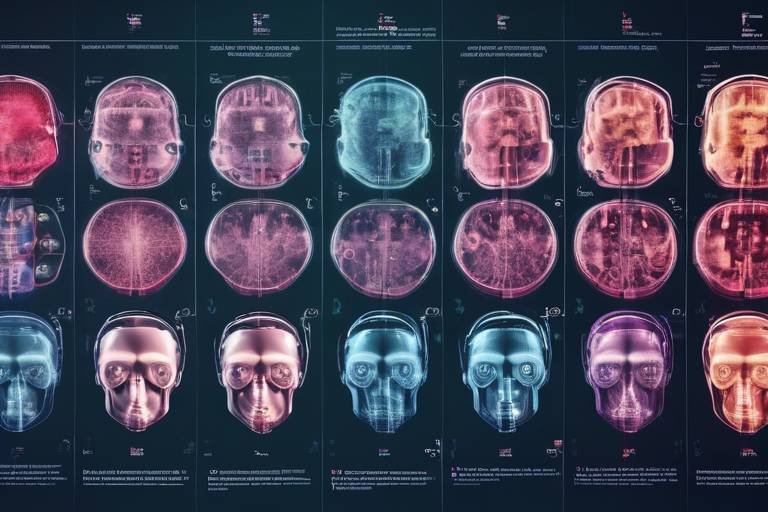The Role of AI in Wildlife Conservation
In a world where the balance of nature hangs by a thread, the role of artificial intelligence (AI) in wildlife conservation has become more crucial than ever. Imagine a tool that can not only enhance our understanding of endangered species but also revolutionize the way we protect them. AI technologies are stepping in as game-changers, providing innovative solutions to tackle the challenges faced by conservationists globally. From automating data collection to analyzing complex ecological patterns, AI is paving the way for a future where wildlife conservation is more effective and sustainable.
So, how exactly is AI transforming wildlife conservation? It begins with the ability to process vast amounts of data at lightning speed. Traditional methods of monitoring wildlife populations can be time-consuming and labor-intensive, often leading to gaps in knowledge and delays in response. However, AI systems can analyze data from various sources, including camera traps, satellite imagery, and even social media, to provide real-time insights into animal behaviors and habitat changes.
Moreover, AI is not just about data collection; it's also about making sense of that data. With machine learning algorithms, conservationists can identify patterns and trends that might otherwise go unnoticed. For instance, AI can help predict migration patterns of species based on environmental changes, allowing for proactive measures to protect their habitats. This predictive capability is akin to having a crystal ball that provides foresight into potential threats, enabling timely interventions.
As we delve deeper into the integration of AI in wildlife conservation, we uncover its multifaceted applications. From enhancing anti-poaching efforts to engaging local communities, AI is proving to be a versatile ally in the fight to save our planet's biodiversity. The future of conservation is not just about preserving what we have; it's about leveraging technology to create a sustainable coexistence between humans and wildlife.
- How does AI help in wildlife monitoring?
AI automates data collection and analysis, allowing for real-time tracking of animal populations and behaviors, which enhances monitoring efforts significantly.
- Can AI predict animal behaviors?
Yes, AI algorithms analyze ecological data to identify trends and predict future behaviors, aiding conservationists in making informed decisions.
- What role does satellite imagery play in wildlife conservation?
Satellite imagery combined with AI provides valuable insights into wildlife habitats, helping conservationists assess environmental changes and plan protective measures.
- How does AI combat poaching?
AI-driven technologies, like smart surveillance systems, can detect poaching activities in real-time, allowing conservation teams to respond quickly.
- What are the future trends in AI and conservation?
As technology evolves, AI will continue to open new avenues for research, protection, and sustainable management of natural resources.

AI Technologies in Wildlife Monitoring
Artificial intelligence technologies, such as machine learning and computer vision, are revolutionizing wildlife monitoring by automating data collection and analysis. Imagine a world where researchers can track animal populations and behaviors with unprecedented efficiency. This is not just a dream; it’s becoming a reality thanks to AI. With the ability to process vast amounts of data quickly, AI is enabling conservationists to gather insights that were previously out of reach. For instance, AI algorithms can analyze camera trap images to identify species, count individuals, and even determine their health status by examining their physical condition in the images.
One of the most exciting aspects of AI in wildlife monitoring is its capacity to enhance traditional methods. For example, instead of spending hours sifting through thousands of photos, AI can automatically detect and classify animals in images, allowing researchers to focus on analysis rather than data entry. This not only saves time but also increases the accuracy of wildlife assessments. The integration of AI tools into monitoring efforts is akin to having a supercharged assistant that never tires, ensuring that no detail goes unnoticed.
Moreover, AI technologies can be used to analyze behavioral patterns of various species. By utilizing video and audio data, researchers can gain insights into how animals interact with each other and their environment. This information is crucial for developing effective conservation strategies. For instance, understanding the mating habits of endangered species can help in creating targeted breeding programs. Similarly, monitoring feeding patterns can inform habitat management practices, ensuring that animals have access to the resources they need to thrive.
Additionally, the use of AI in wildlife monitoring extends to remote sensing. This technology allows conservationists to monitor ecosystems in real-time, detecting changes in land use and habitat loss. For example, AI-powered satellite imagery can reveal deforestation trends or changes in water bodies that may affect local wildlife. This proactive approach enables conservationists to intervene before small issues escalate into major crises, thereby protecting vulnerable ecosystems.
To illustrate the impact of AI technologies in wildlife monitoring, consider the following table that highlights some of the key AI applications:
| AI Application | Description | Benefits |
|---|---|---|
| Machine Learning | Analyzes large datasets to identify patterns and trends | Improves accuracy in species identification and population counts |
| Computer Vision | Processes images and videos to detect and classify wildlife | Reduces manual labor and speeds up data analysis |
| Remote Sensing | Monitors ecosystems using satellite imagery | Provides real-time data for timely conservation actions |
| Behavioral Analysis | Examines animal interactions through video/audio | Enhances understanding of species behavior for better conservation strategies |
In conclusion, the integration of AI technologies into wildlife monitoring is not just a trend; it’s a game-changer. By automating processes, enhancing data accuracy, and providing deeper insights into animal behavior and ecosystem changes, AI is paving the way for more effective conservation efforts. As we continue to harness the power of AI, the future of wildlife conservation looks brighter than ever.
Q1: How does AI help in wildlife monitoring?
AI assists in wildlife monitoring by automating data collection and analysis, allowing for quicker and more accurate tracking of animal populations and behaviors.
Q2: What are some examples of AI technologies used in wildlife conservation?
Examples include machine learning for data analysis, computer vision for image classification, and remote sensing for ecosystem monitoring.
Q3: Can AI predict future behaviors of wildlife?
Yes, AI algorithms can analyze ecological data to identify trends and make predictions about future behaviors, aiding conservationists in decision-making.
Q4: How does remote sensing contribute to wildlife conservation?
Remote sensing provides real-time data on land use and habitat changes, enabling timely interventions to protect endangered species and their habitats.

Data Analysis and Predictive Modeling
Artificial Intelligence (AI) is not just a buzzword; it's a game-changer in the realm of wildlife conservation. One of the most exciting applications of AI in this field is its ability to perform data analysis and predictive modeling. Imagine having the power to sift through mountains of ecological data in mere seconds, pinpointing trends that would take humans weeks or even months to discover. This is precisely what AI offers conservationists, allowing them to make informed decisions based on real-time data.
The vast amount of data generated in wildlife studies can be overwhelming. From tracking animal movements to monitoring environmental changes, the information is abundant yet complex. AI algorithms can analyze this data at an unprecedented scale, identifying patterns that might go unnoticed by human eyes. For instance, machine learning models can be trained to recognize specific behaviors in animals, helping researchers understand their habits, migration patterns, and even breeding cycles. This insight is invaluable for developing effective conservation strategies aimed at protecting endangered species.
Moreover, predictive modeling takes this a step further. By using historical data, AI can forecast future trends in wildlife populations and their habitats. This capability is crucial for conservationists who need to allocate resources effectively. For example, if AI predicts a decline in a certain animal population due to habitat loss, conservationists can intervene proactively, implementing measures to protect the species before it’s too late. The ability to anticipate challenges rather than merely react to them can mean the difference between survival and extinction for many species.
To illustrate the impact of predictive modeling, consider the following table, which outlines how AI can enhance various aspects of wildlife conservation through data analysis and trend prediction:
| Aspect of Conservation | AI Application | Benefits |
|---|---|---|
| Population Monitoring | Machine Learning Algorithms | Identify population trends and behaviors |
| Habitat Analysis | Data Mining Techniques | Assess habitat changes and threats |
| Resource Allocation | Predictive Analytics | Optimize conservation efforts and funding |
| Species Interaction | Behavioral Modeling | Understand ecological relationships |
In addition to these benefits, AI can also enhance collaboration among researchers and conservationists. By providing a shared platform for data analysis, different teams can work together more efficiently, sharing insights and strategies that can lead to more effective conservation efforts. This collaborative approach is essential in tackling the complex challenges posed by wildlife conservation, where every bit of information can be critical.
In conclusion, the integration of AI in data analysis and predictive modeling is revolutionizing wildlife conservation. It empowers conservationists with tools that can process vast amounts of data, identify trends, and predict future behaviors. This not only enables timely interventions but also fosters a collaborative spirit among those dedicated to protecting our planet's precious wildlife. As we continue to embrace these advanced technologies, the future of conservation looks brighter than ever.

Remote Sensing Applications
This article explores how artificial intelligence is transforming wildlife conservation efforts, enhancing research, and providing innovative solutions to protect endangered species and their habitats.
Artificial intelligence technologies, such as machine learning and computer vision, are revolutionizing wildlife monitoring by automating data collection and analysis, leading to more efficient tracking of animal populations and behaviors.
AI algorithms can analyze vast amounts of ecological data to identify trends and predict future behaviors, enabling conservationists to make informed decisions and allocate resources effectively.
Remote sensing, powered by AI, allows for real-time monitoring of ecosystems, helping to detect changes in land use and habitat loss, which are critical for timely conservation interventions. Imagine being able to watch over vast landscapes from the comfort of your home, spotting deforestation or illegal activities before they escalate. This is the power of remote sensing.
AI enhances this technology by processing data collected from various sources, including satellites and drones, to provide detailed insights into environmental conditions. For instance, AI algorithms can analyze satellite imagery to identify changes in vegetation cover, water bodies, and even animal migration patterns. This capability is crucial in understanding how human activities impact wildlife habitats.
Moreover, the integration of AI in remote sensing enables conservationists to:
- Monitor Ecosystem Health: By analyzing satellite data, AI can help assess the overall health of an ecosystem, identifying areas that require urgent attention.
- Predict Environmental Changes: AI models can forecast potential changes in ecosystems, allowing for proactive conservation measures.
- Enhance Resource Allocation: With precise data at hand, conservationists can allocate resources more effectively, ensuring that efforts are focused where they are needed most.
To illustrate the impact of remote sensing applications, consider the following table that summarizes key benefits:
| Benefit | Description |
|---|---|
| Real-time Monitoring | Continuous observation of ecosystems to detect changes promptly. |
| Data Integration | Combining data from various sources for a comprehensive view of wildlife habitats. |
| Cost Efficiency | Reducing the need for on-ground surveys, saving time and resources. |
In essence, remote sensing applications, enhanced by AI, are transforming how we approach wildlife conservation. They provide a sophisticated lens through which we can observe and understand our natural world, ensuring that we can act swiftly and effectively to protect our planet's precious biodiversity.
AI-driven technologies are crucial in combating poaching, utilizing predictive analytics and surveillance systems to identify high-risk areas and deploy resources effectively to protect endangered species.
Integrating AI with surveillance cameras allows for real-time detection of poaching activities, enabling rapid response from conservation teams to prevent illegal hunting and trafficking.
AI initiatives can enhance community involvement in conservation efforts, providing tools and platforms that empower local populations to participate actively in protecting wildlife and their habitats.
As technology advances, the integration of AI in wildlife conservation will continue to evolve, opening new avenues for research, protection, and sustainable management of natural resources.
Q: How does AI help in wildlife conservation?
A: AI assists in wildlife conservation by automating data collection, analyzing ecological trends, and enhancing monitoring efforts through technologies like remote sensing and drones.
Q: What are the main technologies used in AI for conservation?
A: Key technologies include machine learning, computer vision, remote sensing, and predictive analytics.
Q: Can AI predict future behaviors of endangered species?
A: Yes, AI algorithms can analyze historical data to identify trends and predict future behaviors, enabling conservationists to make informed decisions.
Q: How does community engagement play a role in AI-driven conservation?
A: AI initiatives can empower local communities by providing them with tools to participate in conservation, fostering a sense of ownership and responsibility towards wildlife protection.

Satellite Imagery and AI
In the realm of wildlife conservation, the marriage of satellite imagery and artificial intelligence is nothing short of revolutionary. Imagine being able to monitor vast landscapes from the comfort of your office, all while gaining insights that were previously unimaginable. With the power of AI, satellite images are transformed into actionable data, allowing conservationists to assess wildlife habitats with unprecedented accuracy.
One of the most significant advantages of using satellite imagery is the ability to observe changes in the environment over time. For instance, conservationists can track deforestation, urban expansion, and even the effects of climate change on wildlife habitats. This information is crucial because it enables them to respond swiftly to any threats that may arise. With AI algorithms analyzing these images, patterns emerge, revealing how human activity impacts wildlife and their ecosystems.
Moreover, the integration of AI enhances the capability to identify specific wildlife habitats. By processing satellite images, AI can pinpoint areas that are rich in biodiversity, allowing conservationists to focus their efforts where they are most needed. This targeted approach not only saves time but also ensures that resources are allocated effectively, maximizing the impact of conservation initiatives.
To illustrate the effectiveness of satellite imagery combined with AI, consider the following table that outlines key benefits:
| Benefit | Description |
|---|---|
| Real-time Monitoring | AI processes satellite images in real-time, allowing for immediate responses to environmental changes. |
| Data Accuracy | AI enhances the precision of data analysis, reducing human error in identifying critical habitats. |
| Cost Efficiency | Utilizing satellite imagery reduces the need for extensive field surveys, saving both time and money. |
| Long-term Trends | AI can analyze historical satellite data to identify long-term environmental changes affecting wildlife. |
Additionally, the collaboration between AI and satellite imagery is proving invaluable in identifying potential poaching hotspots. By analyzing patterns in land usage and animal movements, AI can help predict where poaching might occur, enabling conservation teams to deploy resources to these areas proactively. This predictive capability is akin to having a crystal ball that reveals the future of wildlife threats, allowing for timely interventions that can save lives.
In conclusion, the integration of satellite imagery and AI is a game-changer in wildlife conservation. It empowers researchers and conservationists with the tools they need to monitor ecosystems, protect endangered species, and make informed decisions. As technology continues to advance, we can expect even more innovative applications of AI in this critical field, paving the way for a sustainable future for our planet's wildlife.
- How does satellite imagery help in wildlife conservation? Satellite imagery provides a bird's-eye view of ecosystems, allowing conservationists to monitor changes in land use, habitat loss, and animal populations effectively.
- What role does AI play in analyzing satellite images? AI algorithms process and analyze satellite images to identify patterns, trends, and changes in the environment, enhancing the accuracy of conservation efforts.
- Can AI predict poaching activities? Yes, AI can analyze historical data and current trends to predict potential poaching hotspots, enabling proactive measures to protect endangered species.
- What are the long-term benefits of using AI and satellite imagery together? The combination allows for real-time monitoring, cost efficiency, improved data accuracy, and the ability to track long-term ecological changes.

Drone Technology Integration
In recent years, the integration of drone technology into wildlife conservation efforts has emerged as a groundbreaking advancement. Drones, equipped with sophisticated sensors and AI capabilities, can cover vast areas of land in a fraction of the time it would take traditional methods. Imagine a team of conservationists trying to monitor a sprawling national park on foot; it’s not only labor-intensive but also time-consuming. Now, picture a drone soaring overhead, capturing high-resolution images and data in real-time. This technology not only enhances efficiency but also provides a bird's-eye view of wildlife habitats, enabling conservationists to gather critical information without disturbing the natural environment.
The ability to quickly access remote areas is one of the most significant advantages of drone technology. For instance, drones can be deployed in regions that are difficult to reach due to rugged terrain or hazardous conditions. This capability allows for comprehensive monitoring of endangered species and their habitats, ensuring that conservationists can respond swiftly to any signs of distress or poaching activities. Furthermore, drones can be equipped with thermal imaging cameras, which can detect heat signatures of animals, making it easier to locate them during nighttime or in dense vegetation.
Moreover, the data collected by drones can be analyzed using AI algorithms to identify patterns in wildlife behavior and habitat use. This data-driven approach allows researchers to make informed decisions about conservation strategies. For example, if a particular area shows a decline in animal sightings, conservationists can investigate potential causes, such as habitat loss or increased poaching activity. By understanding these dynamics, they can implement targeted interventions, such as habitat restoration or enhanced protection measures.
Additionally, the integration of drone technology in conservation efforts fosters collaboration among various stakeholders. Local communities, researchers, and conservation organizations can work together, sharing data and insights gathered from drone surveillance. This collaborative approach not only enhances the effectiveness of conservation initiatives but also empowers local populations to take an active role in protecting their natural resources.
In summary, the integration of drone technology into wildlife conservation is revolutionizing the way we monitor and protect endangered species. With their ability to cover large areas quickly and gather critical data, drones are proving to be invaluable tools in the fight against poaching and habitat destruction. As technology continues to advance, the potential for drones in wildlife conservation will only grow, paving the way for more innovative and effective strategies to safeguard our planet's precious biodiversity.
- What types of drones are used in wildlife conservation? Drones used in wildlife conservation can vary from small quadcopters for close-range monitoring to larger fixed-wing drones for extensive area coverage. They can be equipped with various sensors, including cameras, thermal imaging, and GPS devices.
- How do drones help in anti-poaching efforts? Drones assist in anti-poaching efforts by providing real-time surveillance of protected areas, detecting illegal activities, and enabling rapid response from conservation teams.
- Are there any legal restrictions on using drones for wildlife monitoring? Yes, there may be legal restrictions depending on the country or region. It is essential to comply with local laws and regulations regarding drone usage, especially in protected areas.
- Can drones be used for research purposes? Absolutely! Drones are increasingly being used in research to collect data on animal populations, behaviors, and habitat conditions, providing valuable insights for conservation strategies.

Behavioral Analysis of Species
Understanding the intricate behavioral patterns of wildlife is crucial for effective conservation strategies. With the advent of artificial intelligence, researchers can now analyze vast amounts of video and audio data to gain insights into how species interact, communicate, and respond to their environments. Imagine having a super-intelligent assistant that never tires and can sift through hours of footage to identify key behaviors—this is what AI brings to the table!
AI tools can process data from camera traps and acoustic sensors, allowing conservationists to observe species in their natural habitats without human interference. This is particularly important for studying elusive or endangered animals that might shy away from human presence. For instance, by analyzing the sounds of a forest, AI can help identify which species are present and how they interact with one another. This deep understanding can lead to tailored conservation strategies that are more effective than traditional methods.
Moreover, AI can identify patterns in animal behavior that might go unnoticed by human researchers. For example, it can detect changes in feeding habits, mating rituals, or even stress responses to environmental changes. By understanding these behaviors, conservationists can make informed decisions about habitat management and species protection. The data collected can be organized and presented in a way that highlights critical findings, making it easier for teams to share insights and develop strategies.
To illustrate the impact of AI on behavioral analysis, consider the following table that summarizes some key applications:
| AI Application | Description | Benefits |
|---|---|---|
| Video Analysis | Using AI to analyze footage from camera traps. | Identifies species presence and behavior patterns. |
| Sound Analysis | Processing audio data to detect species calls and interactions. | Enhances understanding of communication and social structures. |
| Behavioral Prediction | Modeling potential future behaviors based on historical data. | Helps in anticipating reactions to environmental changes. |
Ultimately, the behavioral analysis facilitated by AI not only enriches our understanding of wildlife but also empowers conservationists with the tools they need to protect vulnerable species. By leveraging these advanced technologies, we can ensure that our conservation efforts are grounded in solid data and insights, paving the way for a more sustainable future for all living creatures.
- How does AI improve wildlife monitoring? AI automates data collection and analysis, allowing for more efficient tracking of animal populations and behaviors.
- What are the benefits of using drones in wildlife conservation? Drones can cover large areas quickly, capturing high-resolution images and data that aid in monitoring wildlife and detecting poaching activities.
- Can AI help in predicting animal behaviors? Yes, AI algorithms can analyze past behaviors to predict future actions, enabling proactive conservation strategies.
- How does community engagement play a role in AI-driven conservation? AI initiatives can empower local communities by providing tools that enable them to actively participate in wildlife protection efforts.

Enhancing Anti-Poaching Efforts
In the ongoing battle against poaching, artificial intelligence has emerged as a game-changer, providing innovative solutions that bolster anti-poaching efforts. With the alarming rise in illegal hunting and wildlife trafficking, the need for effective strategies has never been more pressing. AI-driven technologies are stepping up to the plate, utilizing advanced tools and techniques that not only detect poaching activities but also help prevent them before they escalate. Imagine having a digital ally that works around the clock, tirelessly monitoring vast expanses of land and alerting conservationists to potential threats. This is the reality that AI brings to the table.
One of the most significant advancements in this realm is the integration of predictive analytics. By analyzing historical data related to poaching incidents, AI can identify patterns and trends, allowing conservationists to pinpoint high-risk areas where poaching is most likely to occur. This proactive approach enables teams to allocate their resources more effectively, ensuring that they are deployed where they are needed most. For instance, if a particular region has seen a spike in poaching activities during specific seasons, conservationists can ramp up surveillance and patrols during those critical times.
Furthermore, the implementation of smart surveillance systems has revolutionized the way conservationists monitor wildlife. By integrating AI with surveillance cameras, these systems can analyze video feeds in real time, detecting suspicious movements that may indicate poaching activities. This technology can differentiate between animals and humans, reducing false alarms and allowing for a more focused response. When an illegal activity is detected, conservation teams can be alerted immediately, enabling them to intervene swiftly and potentially thwart poachers before they can strike.
In addition to surveillance, community engagement plays a crucial role in enhancing anti-poaching efforts. AI initiatives can provide local populations with tools and platforms that empower them to participate actively in conservation. For example, mobile applications can be developed to allow community members to report suspicious activities or share information about wildlife sightings. This not only fosters a sense of ownership among locals but also creates a network of eyes and ears on the ground, significantly enhancing the effectiveness of anti-poaching measures.
To illustrate the impact of AI in anti-poaching efforts, consider the following table that highlights key technologies and their benefits:
| Technology | Benefits |
|---|---|
| Predictive Analytics | Identifies high-risk areas and allocates resources effectively. |
| Smart Surveillance Systems | Real-time detection of poaching activities with reduced false alarms. |
| Community Engagement Platforms | Empowers locals to report suspicious activities and contribute to conservation. |
As we look to the future, the role of AI in enhancing anti-poaching efforts will only grow. With continued advancements in technology, conservationists will have access to even more sophisticated tools, enabling them to stay one step ahead of poachers. The integration of AI not only enhances the efficiency of wildlife monitoring but also fosters a collaborative effort between technology, conservationists, and local communities. Together, they can forge a powerful alliance in the fight against wildlife crime, ensuring that endangered species can thrive for generations to come.
- How does AI help in anti-poaching efforts? AI helps by providing predictive analytics to identify high-risk areas, integrating smart surveillance systems for real-time monitoring, and fostering community engagement.
- What are smart surveillance systems? These are advanced monitoring systems that use AI to analyze video feeds and detect suspicious activities, allowing for rapid response to poaching incidents.
- Can local communities really make a difference in conservation? Absolutely! Engaging local communities empowers them to take an active role in protecting wildlife, making it a collective effort.
- What future technologies can we expect in wildlife conservation? As technology evolves, we can expect more sophisticated AI tools, drones, and enhanced data analytics to further strengthen conservation efforts.

Smart Surveillance Systems
In the battle against poaching, are proving to be a game changer. Imagine a world where technology acts as the eyes and ears of conservationists, tirelessly monitoring vast landscapes for any signs of illegal activity. With the integration of artificial intelligence into surveillance systems, this vision is becoming a reality. These systems utilize advanced algorithms to analyze real-time data from cameras strategically placed in wildlife habitats, allowing for immediate detection of suspicious movements.
One of the most remarkable features of these smart systems is their ability to learn from past incidents. By employing machine learning, they can identify patterns associated with poaching activities, such as specific times of day or particular routes often taken by poachers. This predictive capability enables conservation teams to allocate their resources more effectively, ensuring that they are in the right place at the right time to thwart illegal hunting efforts.
Moreover, these surveillance systems are not just passive observers; they are equipped with real-time alert mechanisms. When a potential poaching event is detected, alerts can be sent immediately to park rangers or conservationists in the area. This rapid response is crucial in preventing wildlife crime, as every second counts when it comes to protecting endangered species. The use of AI in these systems means that they can operate around the clock, providing a level of vigilance that human monitors simply cannot match.
To illustrate the effectiveness of smart surveillance systems, let's take a look at a comparison table highlighting traditional monitoring methods versus AI-enhanced surveillance:
| Feature | Traditional Monitoring | AI-Enhanced Surveillance |
|---|---|---|
| Data Collection | Manual checks and reports | Automated data capture and analysis |
| Response Time | Delayed, dependent on human availability | Immediate alerts to rangers |
| Pattern Recognition | Limited to human observation | Advanced algorithms identify trends |
| Operational Hours | Daylight hours only | 24/7 monitoring capability |
In addition to enhancing anti-poaching efforts, these smart surveillance systems foster community engagement. Local communities can be involved in monitoring efforts by providing them with access to the data and alerts generated by these systems. This not only empowers residents but also creates a sense of shared responsibility for wildlife conservation. When communities are equipped with information about poaching activities, they can take proactive steps to protect their natural resources.
As we look to the future, the role of smart surveillance systems in wildlife conservation will undoubtedly expand. With ongoing advancements in AI and machine learning, we can expect even more sophisticated tools that will aid in the protection of endangered species. The combination of technology and human effort is crucial in ensuring that our planet's biodiversity is preserved for generations to come.
- What are smart surveillance systems? Smart surveillance systems are advanced monitoring technologies that use artificial intelligence to detect and analyze wildlife activities, particularly focusing on preventing poaching.
- How do these systems help in conservation? They provide real-time monitoring, immediate alerts for suspicious activities, and data-driven insights that help conservationists make informed decisions.
- Can local communities participate in these efforts? Yes, smart surveillance systems can engage local communities by sharing data and alerts, fostering a collaborative approach to wildlife protection.
- What future advancements can we expect? Future advancements may include even more sophisticated AI algorithms, enhanced integration with drone technology, and broader community involvement in conservation efforts.

Community Engagement and AI
In the realm of wildlife conservation, community engagement is as vital as any technological advancement. The integration of artificial intelligence (AI) is not just about monitoring and protecting wildlife; it’s also about empowering local communities to take an active role in conservation efforts. Imagine a world where local populations are equipped with tools that allow them to monitor their surroundings, report illegal activities, and contribute to the preservation of their natural heritage. This is not just a dream; it's becoming a reality through AI-driven platforms.
AI technologies can facilitate community involvement by providing accessible data and resources. For instance, mobile applications that utilize AI can enable residents to report sightings of endangered species or instances of poaching. These applications can analyze the data collected and provide insights that help conservationists prioritize areas needing immediate attention. Additionally, educational programs powered by AI can help locals understand the importance of biodiversity and the role they play in protecting it.
Moreover, AI can assist in creating a network of community conservationists who can share information and strategies. By fostering collaboration among local groups, conservationists can implement more effective and culturally relevant conservation strategies. For example, AI can help identify community leaders who are passionate about wildlife, allowing organizations to partner with them to amplify their conservation messages. This not only builds trust but also ensures that conservation efforts are supported by the very people who live alongside these natural resources.
To further illustrate the impact of AI on community engagement, consider the following table showcasing successful AI initiatives in various regions:
| Region | AI Initiative | Impact |
|---|---|---|
| Africa | Wildlife Protection Apps | Increased reporting of poaching incidents by 30% |
| South America | Community Monitoring Systems | Enhanced local engagement in conservation efforts |
| Asia | AI-Powered Education Platforms | Improved awareness of endangered species |
Ultimately, the key to successful conservation lies in collaboration. AI can act as a bridge between conservationists and local communities, fostering a sense of shared responsibility. When communities are engaged and empowered, they are more likely to protect their environment. This synergy not only benefits wildlife but also enhances the social fabric of the communities involved, creating a sustainable model for future conservation efforts.
- How does AI help in community engagement for wildlife conservation?
AI provides tools and platforms that allow local communities to monitor wildlife, report illegal activities, and access educational resources. - Can AI applications be used in remote areas?
Yes, many AI applications are designed to work offline or with minimal connectivity, making them accessible in remote regions. - What role do local leaders play in AI-driven conservation efforts?
Local leaders can help mobilize community support, facilitate communication, and ensure that conservation strategies are culturally relevant.

Future Trends in AI and Conservation
As we look ahead, the integration of artificial intelligence (AI) in wildlife conservation is set to undergo a transformative evolution. The future holds exciting possibilities that promise to enhance our understanding and protection of the natural world. With advancements in technology, we can expect AI to play an even more critical role in research, monitoring, and preservation efforts. Imagine a world where conservationists can predict animal movements with pinpoint accuracy or identify potential threats to ecosystems before they escalate. This isn’t just a dream; it’s becoming a reality!
One of the most promising trends is the development of AI-driven predictive analytics. These sophisticated algorithms can analyze vast datasets from various sources, including satellite imagery, sensor data, and historical records. By identifying patterns and trends, AI can help conservationists anticipate changes in wildlife populations and their habitats. For instance, if a particular species shows signs of declining numbers, AI can assist in pinpointing the causes, whether they be climate change, poaching, or habitat destruction. This proactive approach enables timely interventions that can make all the difference.
Moreover, the collaboration between AI and citizen science is set to flourish. As technology becomes more accessible, local communities can participate in conservation efforts using AI tools. Imagine a scenario where everyday people can upload photos of wildlife to an app that uses AI to identify species and track their movements. This not only empowers communities but also creates a rich database of information that can be invaluable for researchers. By harnessing the collective power of the public, we can enhance our understanding of biodiversity and promote grassroots conservation initiatives.
Another exciting trend is the use of AI in habitat restoration. By analyzing environmental data, AI can help identify areas that are most in need of restoration efforts. For example, it can assess soil health, vegetation cover, and water quality to determine the best strategies for revitalizing degraded ecosystems. This targeted approach ensures that resources are allocated efficiently, maximizing the impact of conservation projects.
Furthermore, as machine learning continues to advance, we can expect improvements in the accuracy of wildlife monitoring systems. Drones and remote cameras equipped with AI can analyze footage in real-time, distinguishing between different species and even identifying individual animals. This level of detail allows for more comprehensive studies of animal behavior and population dynamics, leading to better-informed conservation strategies.
In addition to monitoring and restoration, AI is also paving the way for enhanced anti-poaching measures. With the ability to analyze patterns of illegal activity, AI can help identify hotspots for poaching and allocate resources accordingly. Imagine a future where conservationists can deploy drones or surveillance teams to areas that data suggests are at high risk, potentially preventing poaching incidents before they occur. The combination of AI and real-time data could significantly reduce the pressure on endangered species.
As we embrace these advancements, it’s essential to consider the ethical implications of AI in conservation. Ensuring that technology is used responsibly and equitably will be crucial. This includes addressing concerns about data privacy, the impact on local communities, and ensuring that AI-driven solutions do not inadvertently harm the very ecosystems we aim to protect.
In conclusion, the future of AI in wildlife conservation is not just about technology; it’s about creating a harmonious relationship between humans and nature. By leveraging AI's capabilities, we can enhance our conservation efforts, ensuring that future generations inherit a world rich in biodiversity. The journey ahead is filled with potential, and with the right approach, we can turn the tide for endangered species and their habitats.
- How is AI currently used in wildlife conservation? AI is used for monitoring wildlife populations, analyzing data, and enhancing anti-poaching efforts through predictive analytics.
- What are the benefits of using AI in conservation? AI improves efficiency, accuracy, and the ability to predict and respond to environmental changes, ultimately aiding in the protection of endangered species.
- Can local communities participate in AI-driven conservation efforts? Absolutely! AI tools can empower local communities to contribute data and insights, enhancing conservation initiatives.
- What ethical considerations come with using AI in conservation? It’s crucial to address data privacy, potential impacts on local communities, and ensure technology is used responsibly.
Frequently Asked Questions
- What is the role of AI in wildlife conservation?
AI plays a transformative role in wildlife conservation by enhancing research capabilities and providing innovative solutions to protect endangered species and their habitats. It automates data collection, analyzes ecological trends, and helps conservationists make informed decisions.
- How does AI improve wildlife monitoring?
AI technologies, such as machine learning and computer vision, streamline wildlife monitoring by automating the collection and analysis of data. This leads to more efficient tracking of animal populations and behaviors, allowing for timely interventions.
- Can AI predict animal behaviors?
Yes! AI algorithms can analyze vast amounts of ecological data to identify trends and predict future behaviors. This predictive modeling enables conservationists to allocate resources more effectively and make proactive decisions.
- What is remote sensing in the context of wildlife conservation?
Remote sensing involves using AI-powered technologies to monitor ecosystems in real-time. It helps detect changes in land use and habitat loss, which are critical for timely conservation interventions to protect vulnerable species.
- How do drones contribute to wildlife conservation?
Drones equipped with AI technology can cover large areas quickly, capturing high-resolution images and data. This aids in monitoring wildlife and detecting poaching activities in remote regions, making conservation efforts more effective.
- What are smart surveillance systems?
Smart surveillance systems integrate AI with surveillance cameras to enable real-time detection of poaching activities. This allows conservation teams to respond rapidly to prevent illegal hunting and trafficking of endangered species.
- How can AI enhance community engagement in conservation?
AI initiatives can empower local communities by providing tools and platforms that encourage active participation in conservation efforts. This involvement is crucial for the sustainable management of natural resources and the protection of wildlife.
- What are the future trends in AI and wildlife conservation?
As technology advances, the integration of AI in wildlife conservation will evolve, opening new avenues for research, protection, and sustainable management of natural resources. This ongoing development promises to enhance conservation strategies significantly.



















